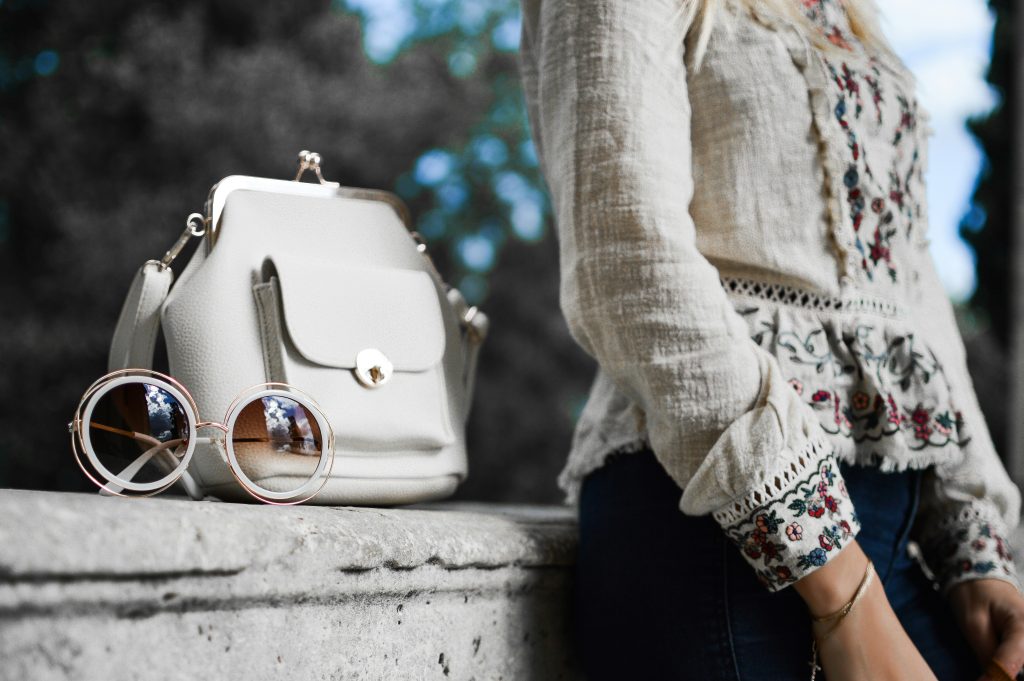In the world of footwear, innovation knows no bounds. From functional sneakers to fashionable dress shoes, the way we lace and fasten our shoes has evolved over time. Gone are the days of traditional laces being the only option – a new era of trends in lacing and fastening has arrived. As comfort, convenience, and style take center stage, manufacturers are embracing new techniques and materials to elevate the shoe-wearing experience. In this article, we explore the exciting world beyond traditional laces, where creativity and functionality collide to create unique and eye-catching designs that are revolutionizing the way we secure our favorite pair of shoes.

1. Introduction
Evolution of lacing and fastening techniques
Lacing and fastening techniques have come a long way from the traditional methods that have been used for centuries. The evolution of these techniques can be traced back to the need for functional and efficient ways to secure footwear. As society progressed, the demand for innovative lacing and fastening systems grew, leading to the rise of alternative methods that offer convenience, performance, and style.
Importance of laces in footwear
Laces play a crucial role in the functionality and aesthetics of footwear. They provide a secure fit, allowing individuals to adjust the tightness and support according to their preference. Laces ensure that shoes stay in place during physical activities, preventing slipping or discomfort. Additionally, laces are a significant design element, contributing to the overall appearance of shoes. They can enhance the style, add visual interest, and reflect the wearer’s personality.
2. Rise of Alternative Fastening Methods
Velcro straps
Velcro straps gained popularity in the late 20th century and revolutionized fastening in footwear. The hook and loop system of Velcro offers ease of use, allowing for quick and effortless adjustments. Velcro straps are particularly favored by children and individuals with limited dexterity, as they eliminate the need for intricate lacing or buckling.
Buckles and clasps
Buckles and clasps have been used for centuries as a fastening method, commonly seen in formal and dress shoes. They offer a secure closure and add a touch of elegance to footwear. Buckles can be adjusted for a customized fit and are often associated with traditional craftsmanship. Their presence on shoes adds a sophisticated touch and enhances the overall aesthetic.
Magnetic closures
Magnetic closures are a newer innovation in fastening technology that provides a seamless and secure closure. They utilize magnets embedded within the shoe material, allowing for a quick and convenient way to secure footwear. Magnetic closures offer ease of use and are especially popular in casual shoes, providing a modern and clean look.
Elastic bands
Elastic bands have become increasingly popular as a fastening alternative due to their flexibility and comfort. They eliminate the need for tying laces and provide a snug fit by stretching and conforming to the wearer’s foot. Elastic bands offer convenience for those who value quick and easy wearing, making them a popular choice for casual shoes and slip-on styles.
3. Innovative Lacing Systems
Quick-Release laces
Quick-release laces are designed to simplify the process of putting on and taking off shoes. These laces feature a simple locking mechanism that allows for quick adjustment and release of tension. Quick-release laces save time and effort, ideal for those who are always on the go or have difficulty with traditional lacing techniques.
Boa lacing system
The Boa lacing system uses a combination of cables, dials, and guides to provide a customizable fit and secure closure. By turning the dial, the cables tighten or loosen, providing precise adjustment and evenly distributing tension across the shoe. The Boa lacing system offers quick and effortless lacing, making it popular among athletes and sports enthusiasts.
Slip-on laces
Slip-on laces offer the convenience of slip-on shoes while still providing the secure fit of traditional laces. These laces are threaded through the shoe like traditional laces but feature an elasticated section that allows for effortless slip-on and off. Slip-on laces are particularly favored for casual and athletic shoes, offering a hassle-free wearing experience.
4. Hybrid Lacing Styles
Combining traditional laces with alternative fasteners
Hybrid lacing styles combine the best elements of traditional laces with alternative fasteners. This allows for a versatile and customizable fit while incorporating the ease and convenience of alternative fastening methods. Hybrid lacing styles often involve using traditional laces for adjustability and alternative fasteners, such as Velcro straps or buckles, for secure closure.
Dual-zone lacing
Dual-zone lacing refers to a lacing system that incorporates two separate zones for adjusting tightness. This enables wearers to customize the fit and tension of different sections of the shoe, providing enhanced comfort and support. Dual-zone lacing is commonly used in sports footwear, allowing athletes to fine-tune the fit according to their specific needs.
Hidden laces
Hidden laces offer a sleek and minimalist look by concealing the laces within the shoe upper. This design feature gives the appearance of laceless shoes while still providing the functionality of laces. Hidden laces are often used in dress shoes or fashion-forward sneakers, adding a touch of sophistication and modernity to the overall design.

5. Focus on Sustainability
Eco-friendly laces and fasteners
In the pursuit of sustainable practices, eco-friendly laces and fasteners have emerged as a trend in the footwear industry. These laces and fasteners are made from sustainable materials such as recycled polyester, organic cotton, or natural fibers. By opting for eco-friendly options, consumers can contribute to reducing waste and minimizing the environmental impact of their footwear choices.
Recycled materials in lacing systems
Another sustainable trend in lacing and fastening is the use of recycled materials in the construction of laces and fastening components. This involves repurposing materials such as recycled plastics, rubber, or fabric waste to create durable and functional laces. By utilizing recycled materials, manufacturers can reduce the consumption of virgin resources and minimize waste in the production process.
6. Tech-Enabled Fastening Solutions
Smart shoes with automated lacing
Technology has revolutionized the footwear industry with the introduction of smart shoes that feature automated lacing systems. These high-tech shoes utilize sensors and motors to automatically adjust the fit and tension of the laces based on the wearer’s foot shape and movement. Smart shoes with automated lacing offer a futuristic and convenient solution for those seeking advanced functionality and customization.
Bluetooth-controlled fasteners
Bluetooth-controlled fasteners provide a new level of convenience by allowing users to control the tightness of their shoes through a smartphone app or remote control. These fasteners use wireless connectivity to communicate with the shoes and enable remote adjustments. Bluetooth-controlled fasteners are ideal for individuals who value convenience and precision in their footwear.

7. Fashionable Lacing Trends
Decorative lacing patterns
Laces are not only functional but also a fashionable way to customize and embellish footwear. Decorative lacing patterns, such as crisscross, zigzag, or lattice designs, add visual interest and elevate the overall look of shoes. These patterns can be achieved by lacing the shoes in unique ways or utilizing different colored laces for contrast.
Mixing colors and materials
Mixing colors and materials in lacing creates a striking visual impact and adds a touch of individuality to footwear. This trend involves using contrasting or complementary colored laces to create a pop of color or incorporating unconventional materials like leather, fabric, or metallic threads into the lacing. Mixing colors and materials allows individuals to express their personal style and make a bold fashion statement.
Lace accessories
Lace accessories have gained popularity as a way to add flair and uniqueness to footwear. These accessories include lace locks, charms, beads, or tassels that can be threaded onto the laces to personalize the shoes. Lace accessories are a fun and creative way to customize footwear, allowing individuals to showcase their creativity and make their shoes stand out.
8. Influence of Sports and Athletics
Specialized lacing for different sports
Different sports and activities require specific lacing techniques to optimize performance and support. Sports such as basketball, running, or rock climbing often utilize specialized lacing systems tailored to the demands of the sport. These lacing techniques provide targeted support, stability, and adjustability, enhancing athletes’ performance and minimizing the risk of injuries.
Enhanced performance through precise lacing
Precise lacing plays a critical role in maximizing performance and comfort during physical activities. Techniques such as heel locking, midfoot wrapping, or toe zone adjustment can significantly improve stability, reduce slippage, and enhance overall control. By taking advantage of precise lacing methods, athletes and active individuals can achieve optimal fit, resulting in improved performance and confidence.
9. Cultural and Historical Lacing Techniques
Traditional lacing methods from different cultures
Lacing methods vary across cultures and can provide insight into the historical and cultural significance of footwear. Techniques such as the Chinese staircase lacing, the Roman cross lacing, or the Moroccan slipper lacing showcase the diversity and creativity of lacing practices around the world. Exploring these traditional lacing methods can deepen one’s appreciation for the artistry and craftsmanship associated with footwear.
Revival of vintage lacing styles
Vintage lacing styles have made a comeback in recent years, reflecting a nostalgia for the past and a desire for timeless fashion. Lacing styles such as the crisscross, over-under, or straight-bar lace were popular in the early 20th century and have regained popularity among fashion enthusiasts. Reviving these vintage lacing styles adds a touch of timeless elegance and uniqueness to modern footwear.
10. Future Directions and Conclusion
Integration of technology with lacing
The integration of technology with lacing systems is expected to continue evolving, offering innovative and convenient solutions. Advancements in materials, sensors, and connectivity will enable even more advanced features such as self-adjusting laces, real-time fit analysis, or personalized comfort settings.
Personalized fastening systems
The future of fastening systems lies in personalization, allowing individuals to create a fit tailored to their unique needs. Customizable components, such as adjustable tension zones or modular fasteners, will become more prevalent, offering a truly personalized and comfortable experience.
Summary of trends
The lacing and fastening landscape has expanded beyond traditional laces, with alternative fastening methods, innovative lacing systems, hybrid styles, and sustainable practices gaining prominence. The influence of sports, fashion, culture, and technology has led to an array of trends that cater to individual preferences and needs. As the future unfolds, we can expect further advancements in the fastening industry that prioritize functionality, style, and personalization.


